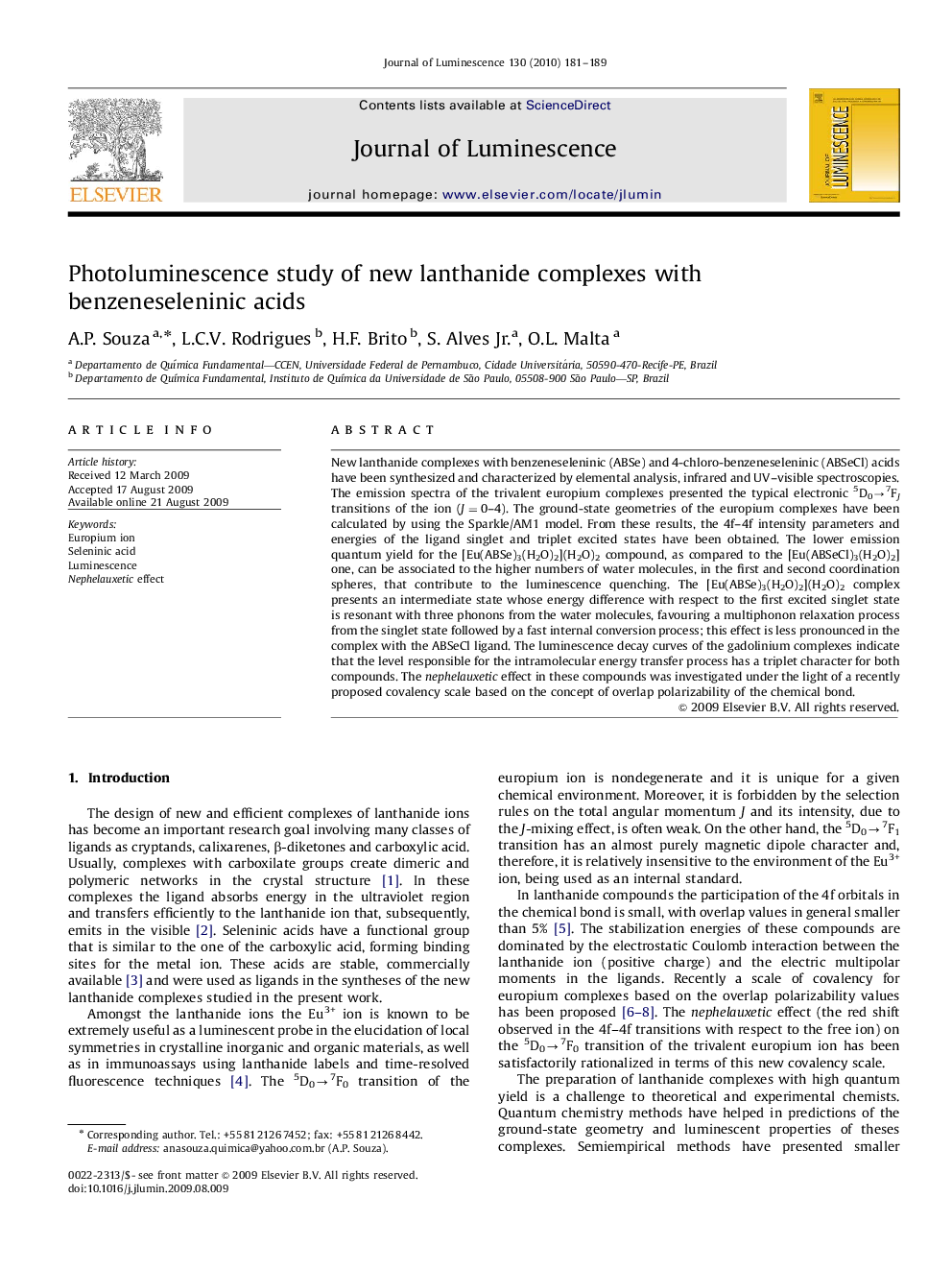| Article ID | Journal | Published Year | Pages | File Type |
|---|---|---|---|---|
| 5402888 | Journal of Luminescence | 2010 | 9 Pages |
Abstract
New lanthanide complexes with benzeneseleninic (ABSe) and 4-chloro-benzeneseleninic (ABSeCl) acids have been synthesized and characterized by elemental analysis, infrared and UV-visible spectroscopies. The emission spectra of the trivalent europium complexes presented the typical electronic 5D0â7FJ transitions of the ion (J=0-4). The ground-state geometries of the europium complexes have been calculated by using the Sparkle/AM1 model. From these results, the 4f-4f intensity parameters and energies of the ligand singlet and triplet excited states have been obtained. The lower emission quantum yield for the [Eu(ABSe)3(H2O)2](H2O)2 compound, as compared to the [Eu(ABSeCl)3(H2O)2] one, can be associated to the higher numbers of water molecules, in the first and second coordination spheres, that contribute to the luminescence quenching. The [Eu(ABSe)3(H2O)2](H2O)2 complex presents an intermediate state whose energy difference with respect to the first excited singlet state is resonant with three phonons from the water molecules, favouring a multiphonon relaxation process from the singlet state followed by a fast internal conversion process; this effect is less pronounced in the complex with the ABSeCl ligand. The luminescence decay curves of the gadolinium complexes indicate that the level responsible for the intramolecular energy transfer process has a triplet character for both compounds. The nephelauxetic effect in these compounds was investigated under the light of a recently proposed covalency scale based on the concept of overlap polarizability of the chemical bond.
Related Topics
Physical Sciences and Engineering
Chemistry
Physical and Theoretical Chemistry
Authors
A.P. Souza, L.C.V. Rodrigues, H.F. Brito, S. Jr., O.L. Malta,
